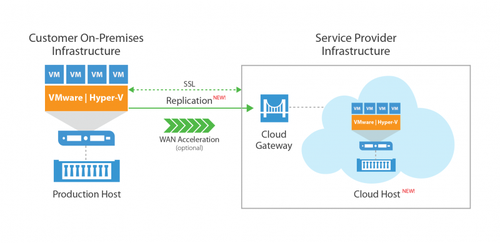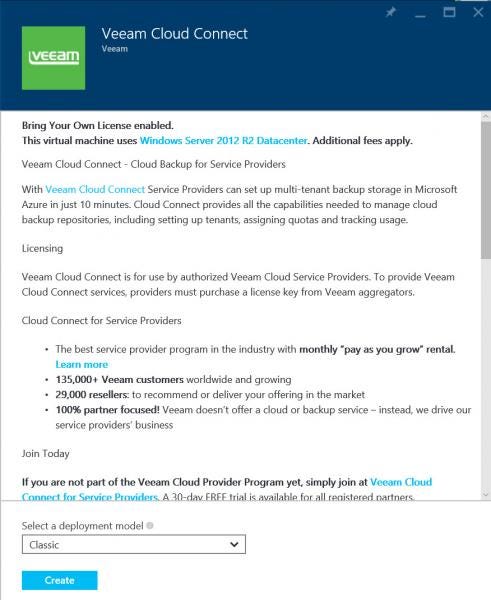Go Wider and Deeper with Microsoft Azure and Veeam Cloud Connect
Disaster recovery as a service (DRaaS) is delivered by cloud computing platforms and is a great solution for IT organizations that want to follow industry best practices and get their data offsite. The "3-2-1 rule" points IT shops to keep: three copies of their data, on two different types of media, with one copy off-site. Traditionally, IT teams fail when it comes to moving their data offsite. This is where Azure and Veeam Software work in harmony.
August 21, 2015

For the last few years, Microsoft has been busy building out Microsoft Azure data centers around the world. In total, Microsoft has over $15 billion dollars invested in its cloud computing platform that allows users to easily consume compute and storage resources and services. Azure allows extreme flexibility for building, deploying, and managing applications and services. There are many different use cases and reasons for organizations to leverage Azure technologies. Using what is commonly known as platform as a service (Paas), developers love the ability to rapidly stand up and tear down .NET, PHP, C# and C++ environments without having to wait on traditional corporate IT. Software as a service (SaaS) applications like Office365 or SharePoint Online could be already servicing customers within your portfolio. Perhaps you’re already recommending that customers burst workloads out to Azure infrastructure as a service (IaaS) resources during peak holiday season?
Disaster recovery as a service (DRaaS) is delivered by cloud computing platforms and is a great solution for IT organizations that want to follow industry best practices and get their data offsite. The “3-2-1 rule” points IT shops to keep: three copies of their data, on two different types of media, with one copy off-site. Traditionally, IT teams fail when it comes to moving their data offsite. This is where Azure and Veeam Software work in harmony.
Leveraging Microsoft Azure and Veeam–Together
Offering DRaaS to your customers allows you to get wider and deeper within existing accounts, and to build recurring revenue streams while opening new doors and capitalizing on whitespace. Microsoft Azure IaaS services give service providers the ability to consume resources without having to lay out a large capital investment (CAPEX) for infrastructure resources. Simply sign up and get rolling.
Last year, Veeam Software released Veeam Cloud Connect, a technology that provides service providers with the ability to easily create and offer offsite backup repositories to their customers. Simply put, Cloud Connect gives traditional Veeam customers the ability to use native Veeam backup copy jobs to copy data (virtual machine backup images) out of their data center and out to Azure for true off-premises archival. Customers and service providers don’t need to worry about setting up and managing site-to-site VPN connections or configuring VLANs to ensure the same network range across on-premises and off-premises. Veeam Cloud Connect leverages single port encapsulation and sends traffic over a secure and reliable SSL/TLS connection.

Veeam provides a virtual appliance from within the Microsoft Azure Marketplace that is pre-setup and ready for quick deployment–simply search for Veeam Cloud Connect. Once the VM is up and running, there are just a few steps to run through.
Set up certificate: Use third-party or self-signed cert.
Cloud gateway: Cloud gateways handle traffic between customer and service provider, and add multiple cloud gateways for high availability and availability.
Add user (also known as “tenants”) and/or quota: This is the account customers use to connect to their dedicated cloud repository residing within Microsoft Azure. Service providers can also set up repository quotas to limit consumption.
As a reference, check out our Veeam Cloud Connect: Microsoft Azure Configuration Guide.

Closing
For many reasons, moving data offsite has been an extreme challenge for IT organizations. Service providers can help their customers achieve greatness by mastering the “3-2-1 Rule”–three copies of data, two different types of media, and one off-site. When paired, Veeam Cloud Connect and Microsoft Azure provide a best-of-breed solution that benefits the customer and service provider alike. Be sure to check out more details about Microsoft Azure and Veeam Cloud Connect at veeam.com
About the Author
You May Also Like


